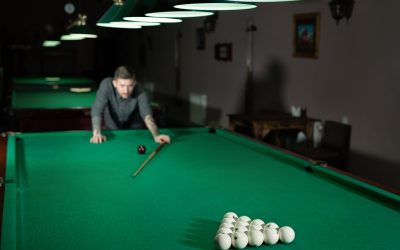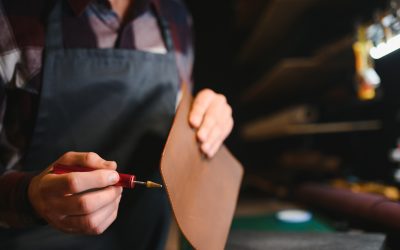
Is your pool table looking tired, the felt worn, cushions bouncy no more, or the finish scratched and dull? Whether it’s a treasured family table or a commercial feature in a games room, a proper refurbishment restores playability, protects value, and turns heads again. This practical guide walks you through what refurbishment involves, what to watch for in Dubai’s climate, and how to choose between DIY fixes and professional restoration.
Why refurbish your pool table?
- Better playability: Level slate, fresh cushions and new cloth restore true roll, consistent rebound and accurate shots.
- Longevity: Fixing wood, pockets and ironwork prevents minor damage becoming costly repairs later.
- Aesthetics & value: A refurbished table looks like new, important for homes, clubs and resale.
- Safety: Loose bolts, broken pockets or damaged rails can cause accidents; refurbishment fixes these issues.
Signs your table needs a full refurbishment
Look for these clear warning signs:
- Worn, faded or torn cloth with visible nap loss
- Uneven roll or dead spots on the bed (possible slate or leveling issues)
- Loose or “mushy” cushions that don’t rebound properly
- Cracked, warped or water-damaged timber rails or legs
- Broken, sagging or rotten pockets (especially leather)
- Squeaks, rattles or loose bolts when the table is played or moved
What a professional refurbishment usually includes
(Use this as a checklist when requesting a quote.)
- Full inspection & written quote: assess slate condition, rails, cushions, woodwork and pockets.
- Dismantling: rails and accessories removed so slate and cabinet can be accessed safely.
- Slate work: cleaning, surfacing, and precision leveling; damaged slate may be replaced.
- Cushion repair or replacement: new rubber profiles fitted and bedbed adjusted for correct rebound.
- Re-felting (re-clothing): old cloth removed, bed/rails re-covered with a chosen cloth type (worsted for tournament play; quality napped cloth for home use).
- Wood repair & refinishing: repair chips or cracks, re-stain or lacquer to restore the finish.
- Hardware & pocket replacement: leather pockets or modern options restored/replaced.
- Reassembly & calibration: everything reassembled, table leveled and tested for true play.
- Final cleaning & handover: table brushed, balls/ cues checked, and maintenance advice provided.
Important: slate is heavy and delicate, slate handling and levelling are specialist tasks and usually require trained technicians.
DIY vs Professional: when to call the experts
Good DIY jobs:
- Brushing and vacuuming cloth, light steam-cleaning spots (careful), polishing wood, tightening visible bolts, replacing pockets on simpler tables.
When you should hire professionals:
- Any slate work (moving, leveling, replacing)
- Replacing cushions or re-bedding rails
- Full re-felting or complex wood restoration
- When the table is antique or high value, professionals protect provenance and finish
In short: small surface maintenance can be DIY; structural, felt and slate jobs are best left to specialists.
Dubai-specific considerations
- Heat & sun: direct sunlight and extreme heat can dry and fade cloth and finish, keep tables out of direct sun.
- Dust & sand: desert dust/grit accelerates wear; cover the table when not in use and use a soft brush after every session.
- Humidity swings: coastal humidity can affect wooden rails and pockets, regular inspections help spot early swelling or shrinking.
- Indoor climate control: keeping the table in a temperature-controlled room (AC on hot days) reduces stress on wood and felt.
Choosing materials & cloth
- Cloth: choose a quality worsted cloth for competitive/tournament-level play; a high-grade napped cloth is fine for most homes and lounges.
- Cushions: opt for reputable rubber profiles that match your table’s original spec for correct rebound.
- Pockets & hardware: leather pockets look classic; modern synthetic or plastic pockets can be more durable in high-use commercial settings.
- Finish: use UV-resistant lacquers and high-quality stains to withstand Dubai’s light and heat exposure.
Maintenance schedule (simple & practical)
- After every session: brush the cloth with a dedicated pool-table brush and remove stray chalk/dust.
- Weekly: wipe rails with a soft, slightly damp cloth and vacuum around the table to remove grit.
- Monthly: check bolts, pockets and cushion feel; tighten or note anything loose.
- Yearly / as-needed: professional inspection, cloth condition, cushion rebound and slate level. Many tables benefit from professional attention every few years depending on use.
FAQ (quick answers)
Can I re-felt my table myself?
Minor re-felting is possible for experts, but proper stretching, seam work and correct adhesion are tricky, for best results hire a pro.
How often should cloth be replaced?
Depends on usage: a lightly used home table might need cloth replacement every 5–10 years; busy commercial tables need attention far more often.
Is replacing slate necessary?
Not always. Slate can often be surfaced and re-leveled. Replacement is needed only when cracked or irreparably warped.
Ready to restore your table?
If your table needs a refresh in Dubai, from a gentle refinish to a full playability overhaul, Interpoolme can inspect and provide a tailored refurbishment plan. Book a professional inspection to get a clear diagnosis and a written quote.


